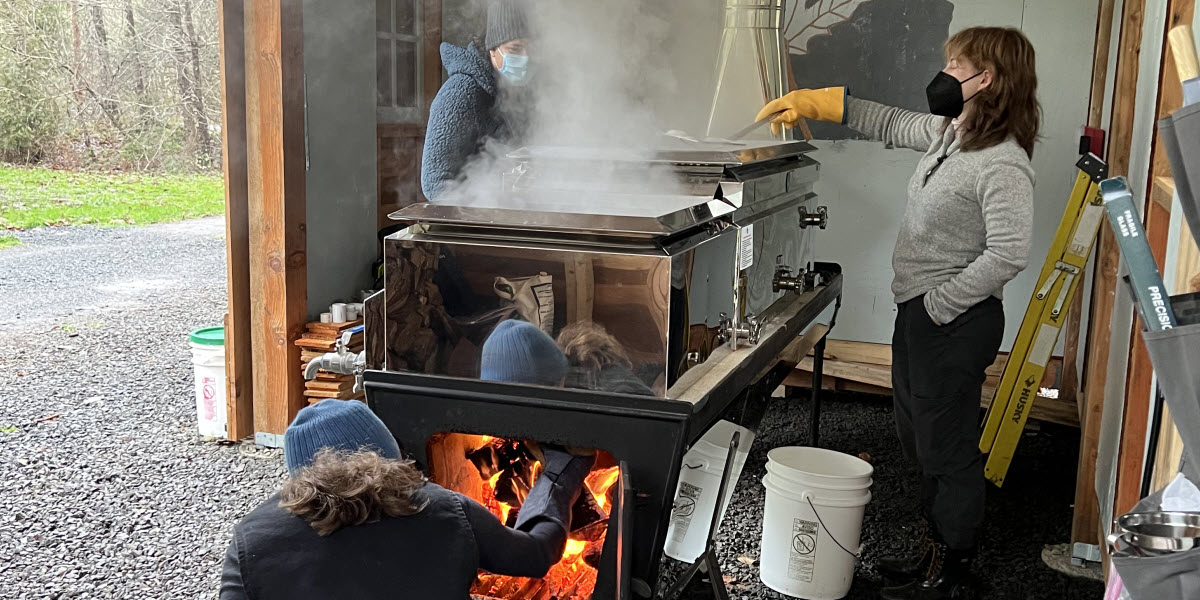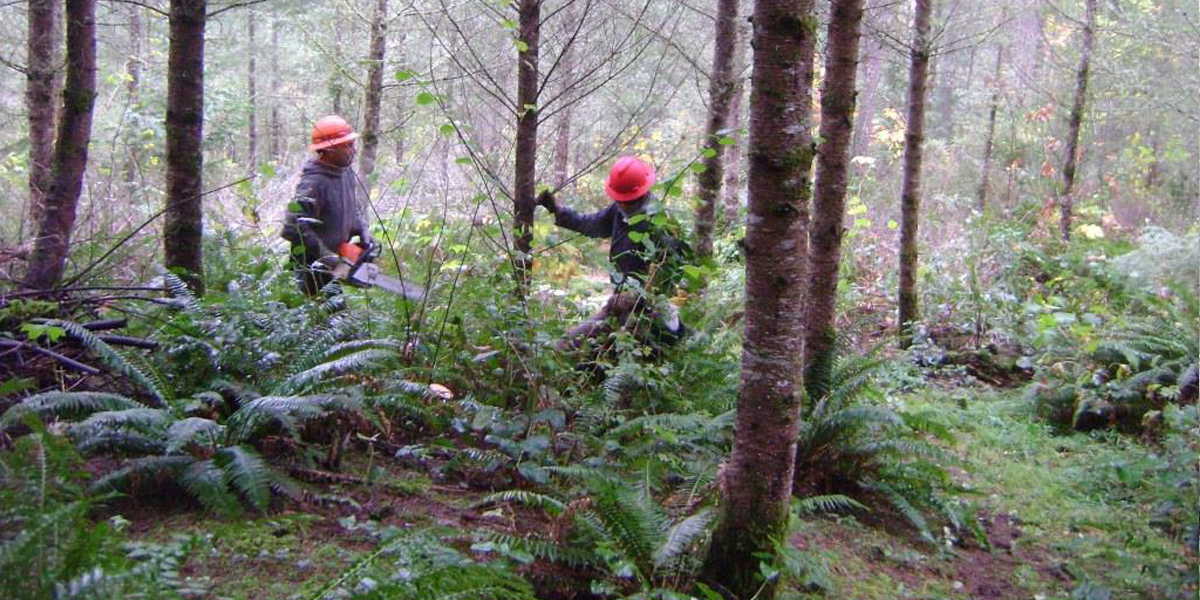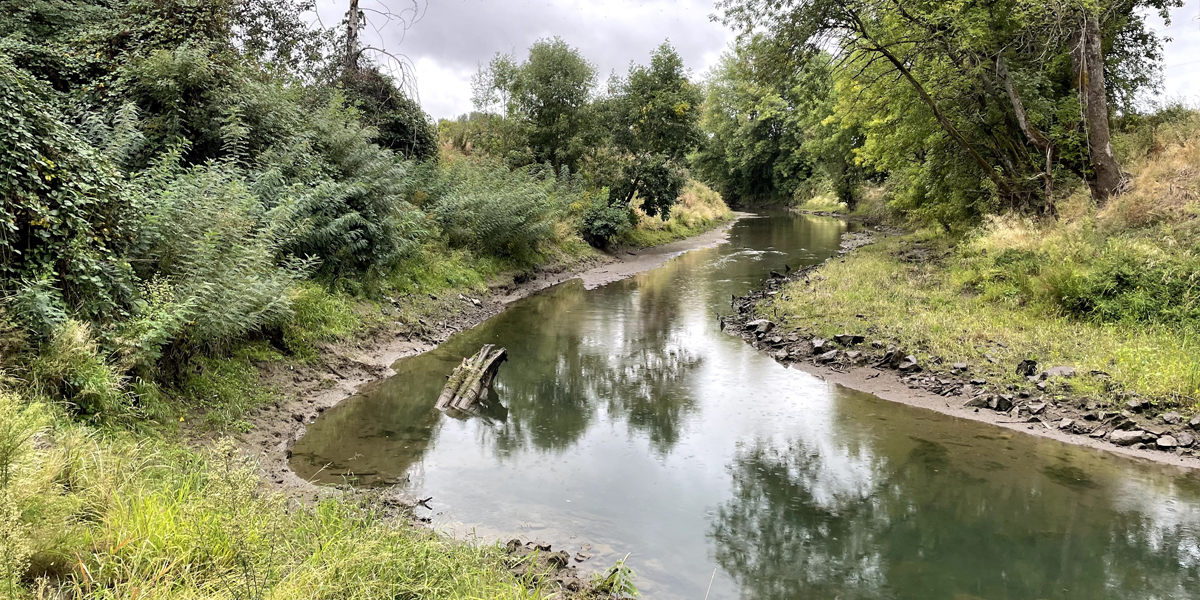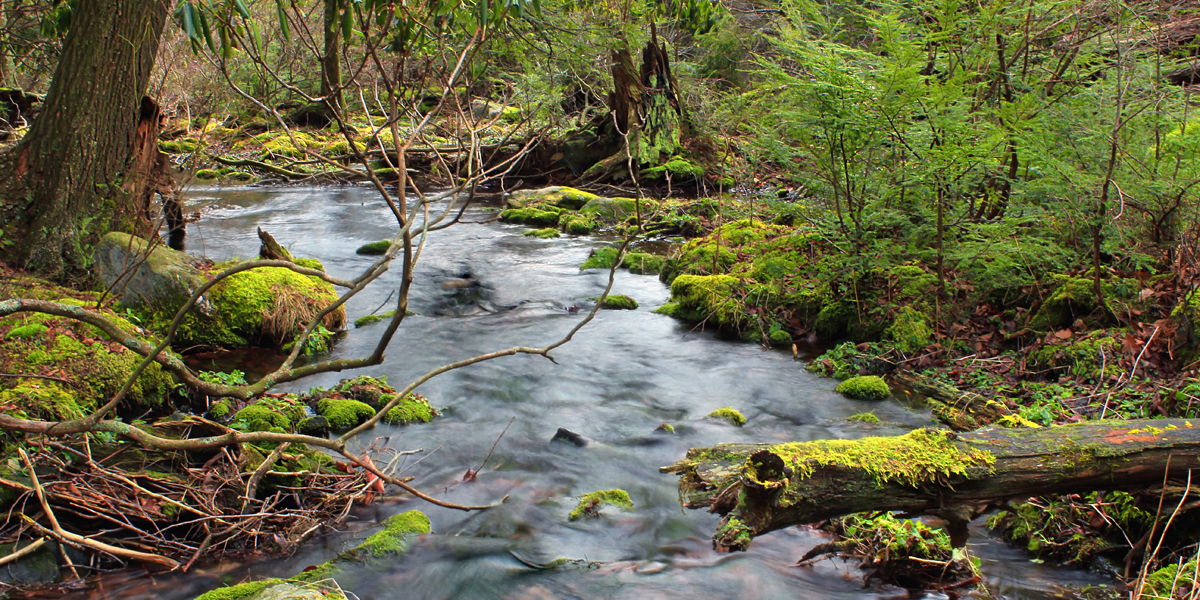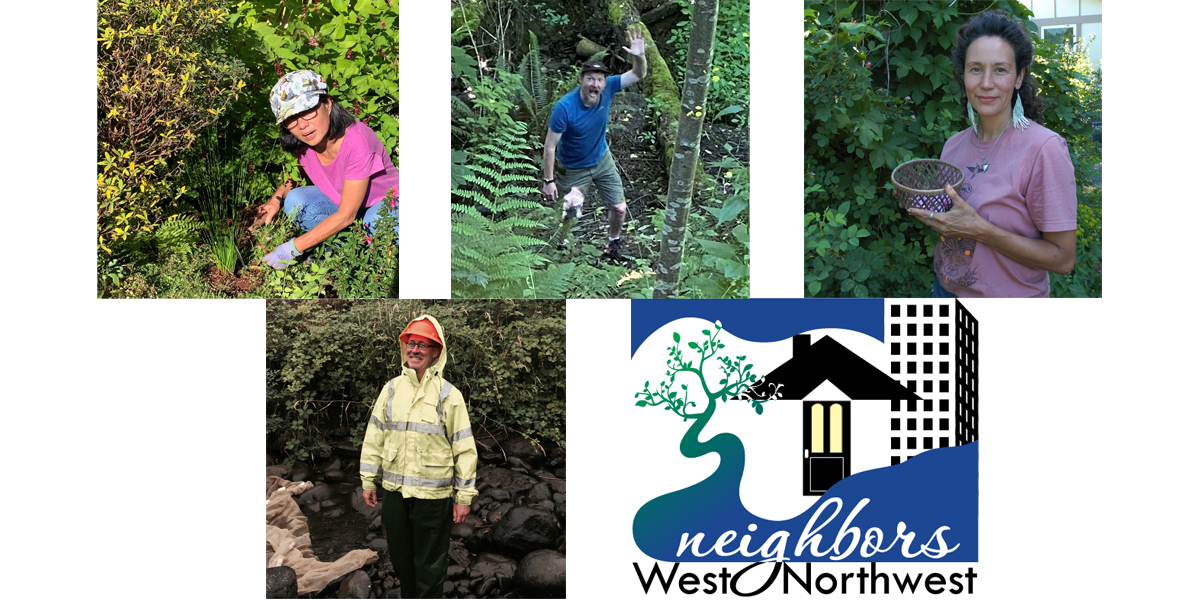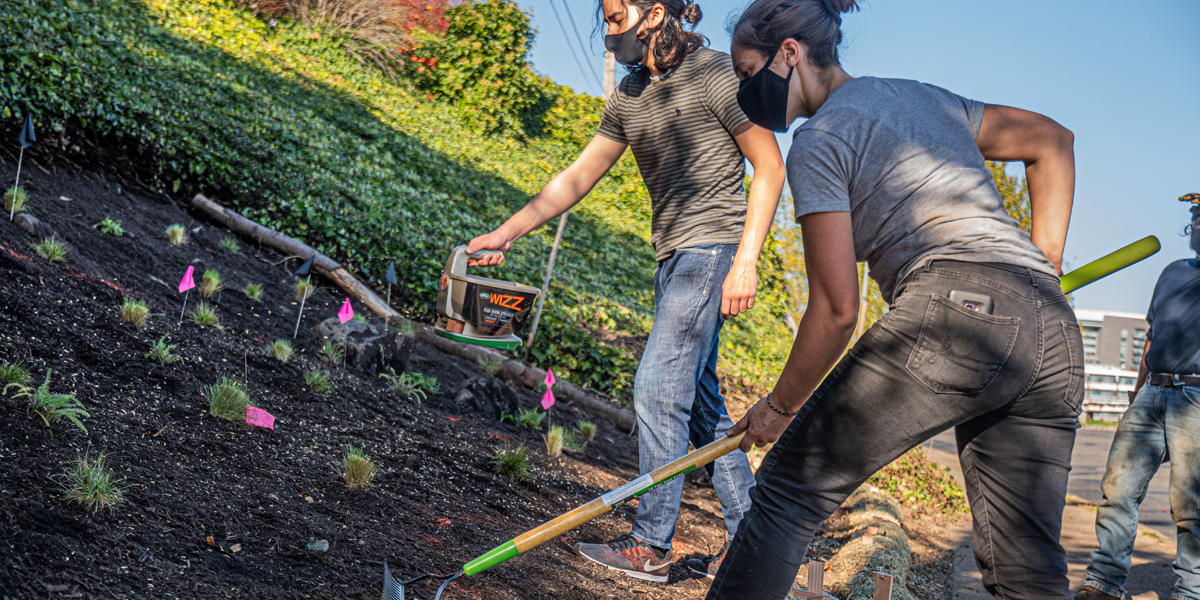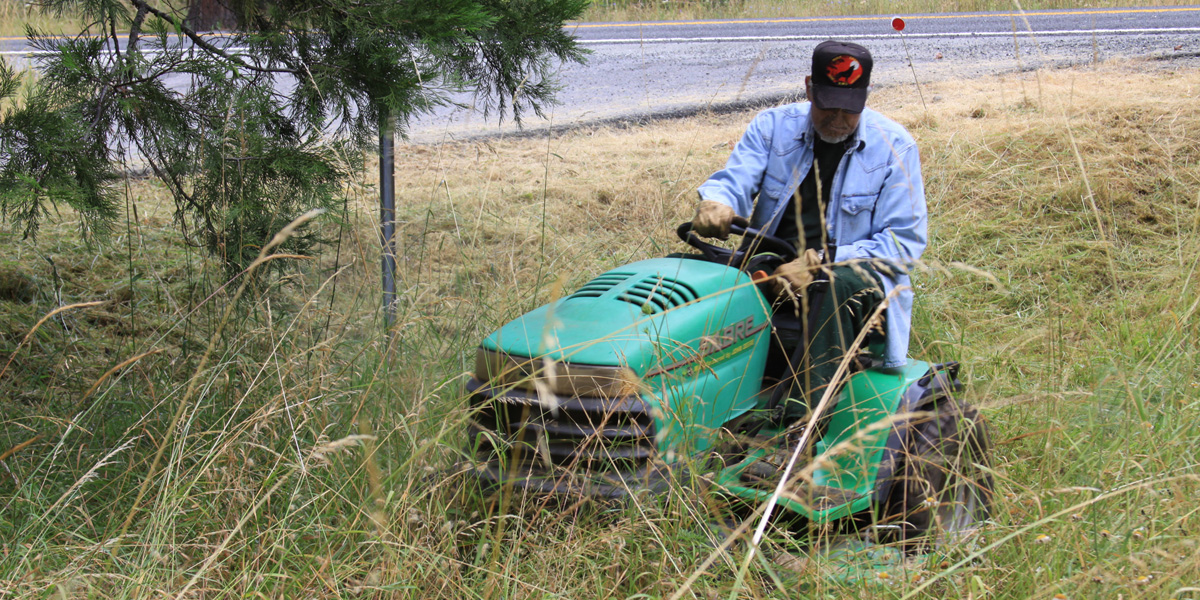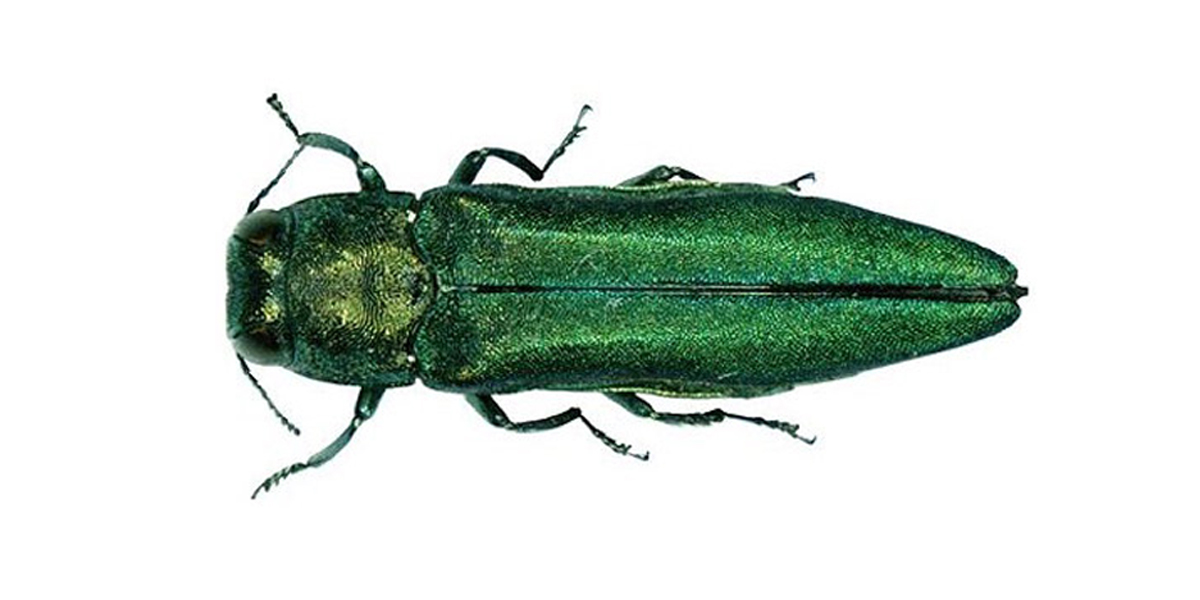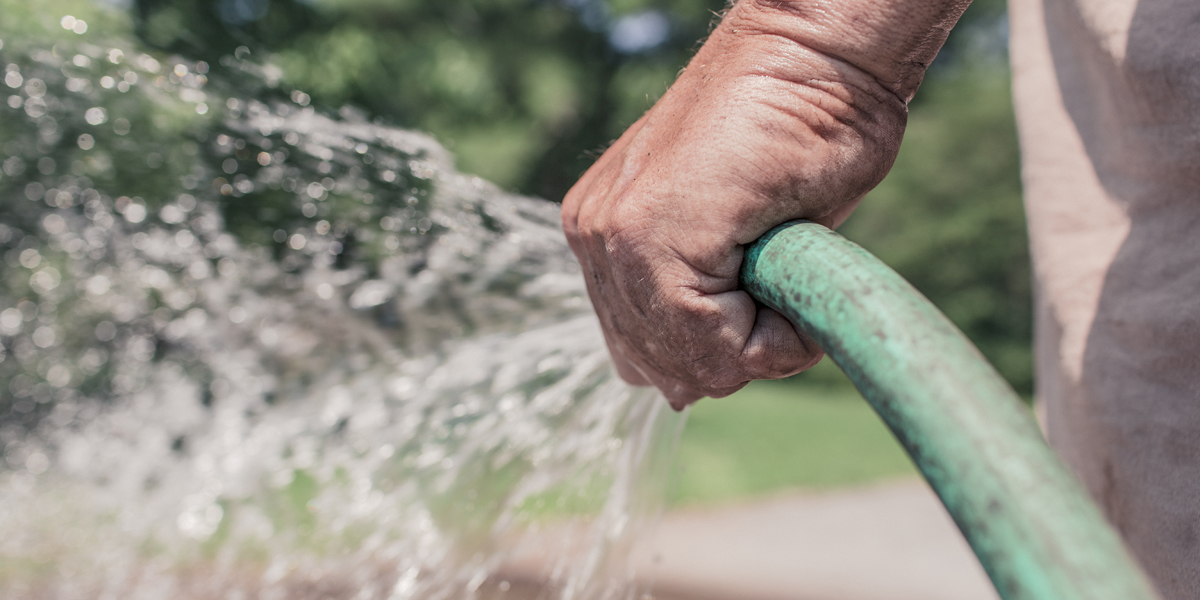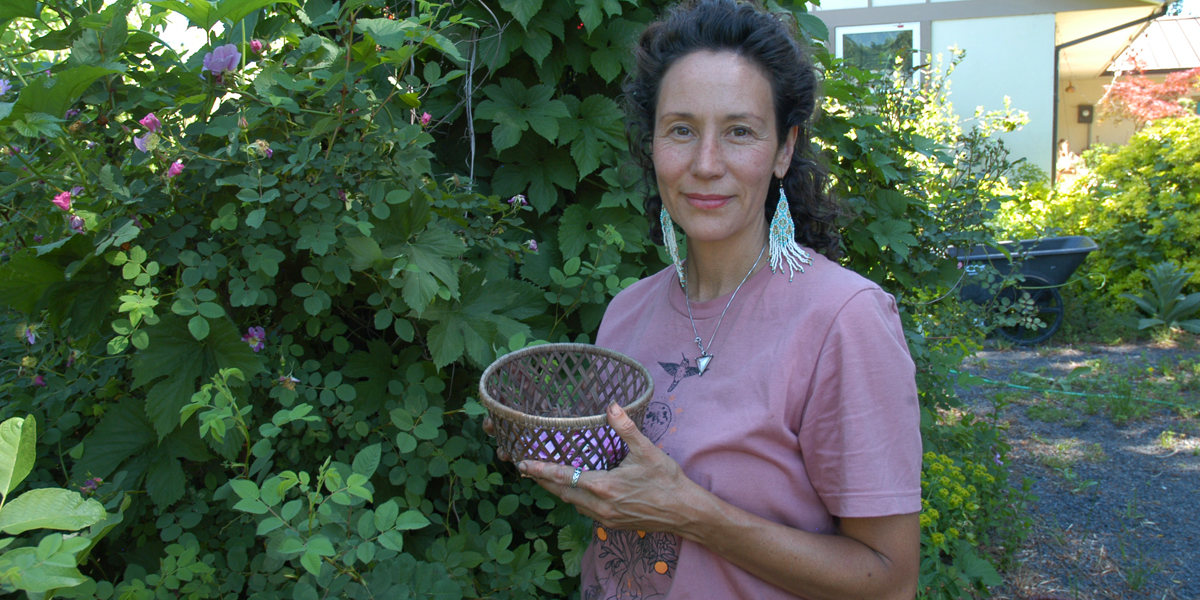Posts by WMSWCD Admin
Meet our 2022 interns!
Jordan DeLawder (pictured left) graduated from Tufts University with a BS in Environmental Engineering. Jordan currently works at a farm and a produce market, and they are interested in bridging the gap between Portland’s urban center and nearby rural areas. Jordan spent several years studying herbalism and is an avid local forager. They are interested…
Read MoreBigleaf maple syrup: A Pacific Northwest delicacy and emerging industry
Guest article by Eric T. Jones, Oregon State University One thing western Oregon has an abundance of is bigleaf maple (Acer macrophyllum) trees. Ask a Douglas fir tree farmer and they will likely tell you that as hard as they try, they are difficult trees to kill. Enter the Oregon State University (OSU) College of…
Read MoreWinter is time for forest health
Winter may seem like a time when there’s not a lot going on in the forest, so you may be inclined to kick back by the fireside and watch the rain fall outside. However, wintertime is actually one of the best times to take actions for improving your forest’s health. The cold wet weather reduces…
Read MoreSturgeon Lake Restoration Project – Three Year Update
With the construction of the Sauvie Island levee by the U.S. Army Corps of Engineers (USACE) in the 1940s, open water and wetland habitat on the island was reduced by 45%. The levee and the dams further upstream on the Columbia River altered hydrology and sedimentationSedimentation Fine soil particles that are washed into streams collect…
Read More5 Tips for a Healthy Stream
(Photo by Nicholas T: www.flickr.com/photos/nicholas_t/11660023586) One of the most essential types of natural habitats we have is the riparianRiparian areas The land alongside a stream, creek, river, or floodplain forest, which affects the health of the adjacent stream and benefits our climate. A riparian forest is the community of trees, shrubs, and understoryUnderstory The area…
Read MoreIntroducing the District’s Climate Change Internship
West Multnomah Soil & Water Conservation District has been selected to host a Portland State University (PSU) Institute for Sustainable Solutions (ISS) Louis Stokes Alliance for Minority Participation (LSAMP) Climate Change Intern. The ISS is partnering with the LSAMP program to provide funding for climate change and climate/disaster resilience related internships for the 2021-2022 academic…
Read MoreOur 2021 Conservation Awardees
URBAN COOPERATOR AWARD: Joel Hanawalt Joel has a vision of a restored Deer Creek Watershed. He has brought his neighbors together on a project, partially supported through OWEB funding, to which Joel has contributed considerable amounts of time on monitoring, removing invasive plants, and planting native plants along Deer Creek. RURAL COOPERATOR AWARD: Jennifer Rose…
Read MoreUrban Conservation Planning and Collaboration: Highlights from 2020-2021
(Stormwater Stars planting event. Photo by Corey Shelton) Covid-19 didn’t stop residents from getting out on their properties and into local natural areas to connect with the land and lend a hand. It also didn’t stop urban partners from continued collaboration and innovation focused on better addressing challenging urban conservation issues. We developed seven new…
Read MoreWildfire Risk Reduction Program
(Photo: Mowing tall grass around the home can help reduce the risk of fire reaching the home. Photo by Oregon Department of Forestry.) Oregon historically was a fire adapted landscape and traditionally managed as such by Oregon’s Indigenous people. However, since the onset of European settlement, the landscape has been altered by urban and rural…
Read MoreOn the lookout for emerald ash borer in western Multnomah County
(Emerald ash borer, Agrilus planipennis Fairmaire. Photograph by Pennsylvania Department of Conservation and Natural Resources – Forestry, Bugwood.org; Image link) Emerald ash borer (Agrilus planipennis) (EAB) is a small, brilliant metallic green beetle about half an inch long and native to north-east Asia that was unintentionally introduced to the U.S. around 2002, likely in ash wood used in…
Read MoreWatering in an Era of Extreme Heat
When thinking of Oregon, a lush, diverse, green landscape with wet winters and comfortable dry summers may come to mind. But we can all remember the last heatwave and there’s always going to be a next one. We are seeing a change to what is our new normal. Continual heat waves are going to shift…
Read MoreFolk medicine making on Sauvie Island: a relationship with land, plants, and community
We had the pleasure and honor of talking recently with Jennifer Rose Marie Serna, a Latina folk herbalist, mother, regenerative farmer, land activist, skill educator, and owner of Wapato Island Farm, to learn more about what she and her farm family and community have been creating on the island since West Multnomah Soil & Water…
Read More
